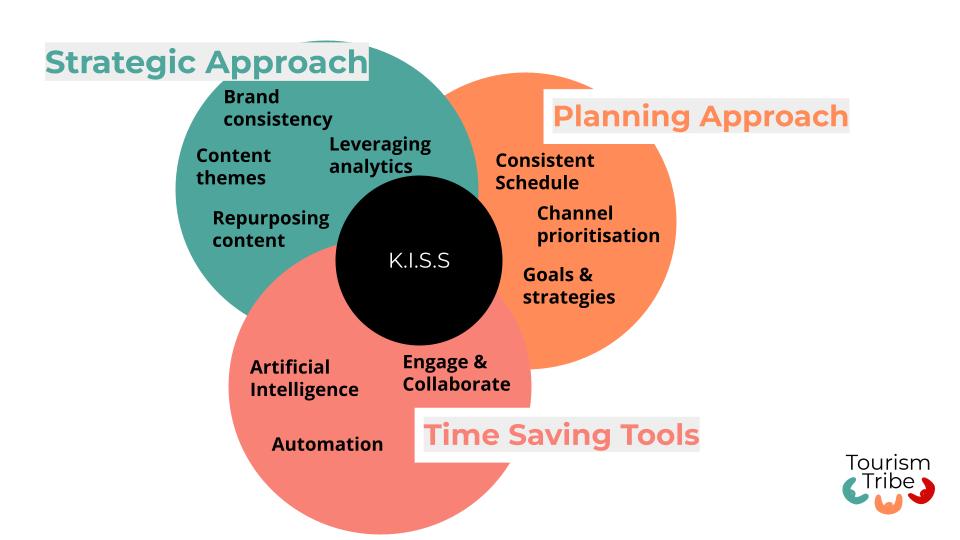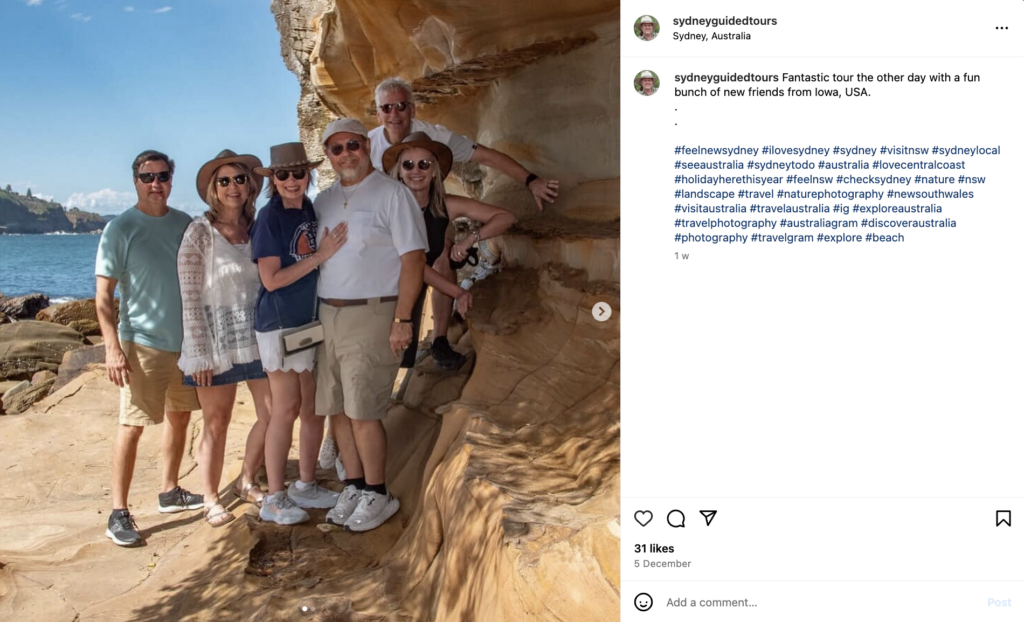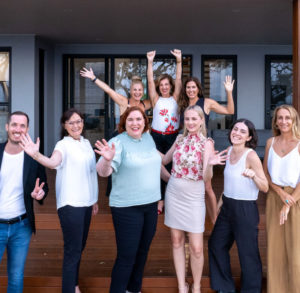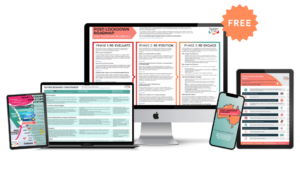In the dynamic world of tourism, social media continues to evolve as a pivotal platform for marketing and customer engagement. However, aligning these digital strategies with overarching business goals remains a challenge for many. This blog post explores vital strategies to make the most of social media for any sized tourism business in 2024, and the key questions that tourism operators should ask themselves, or their outsourced social media service providerr, to ensure their social media activities are strategically aligned with their business objectives.
Aligning Social Media with Business Goals
Question 1: How does the social media strategy support my business goals?
Understanding the link between your social media activities and business goals is crucial. Whether it’s driving direct bookings, enhancing brand visibility, or engaging with customers, your social media goals should mirror your business objectives. Set specific goals like increasing website traffic, boosting engagement rates, or enhancing your online reputation, and measure these regularly to gauge success.
Prioritise your social media channels based on your ideal customers, the people who will support the achievement of your business goals. The vast majority of tourism businesses have limited marketing and social media resources, so it’s critically important that you prioritise how often and what you post on Instagram vs Tik Tok vs Facebook etc, depending on your target audience.
Set up website tracking in Google Analytics 4 (GA4) so that you can specifically measure website visits resulting from different social channels, and set up events and conversion tracking in GA4 to be able to measure website users’ propensity to convert.

Engaging Audience Through Strategic Content
Question 2: How is the posting schedule, content, and post formats encouraging my audience to move through the phases of attention, interest, desire, and action?
Social media is not just about posting content; it’s about crafting a journey for your audience that encourages them to take action with your business. An action could be for example, to Swipe Up to Learn More, or to visit your website to read your recent blogpost.
A well-planned content calendar that aligns with your destination’s seasonal trends, events and news can significantly enhance audience engagement.
Consider the different stages of the purchase cycle from Dream to Plan to Book to Experience to Advocate, and ensure that you are offering your audience content that supports each different stage.
Experiment with different content formats – videos, blogs, interactive posts – to captivate and move your audience from mere attention to action.
Maximising Effort through Content Repurposing
Question 3: How is content being repurposed to maximise effort and time, and to support my customer’s preferred channels beyond social media?
In the fast-paced social media landscape, repurposing content across different platforms is key. Transform a blog post into a series of Instagram infographics or convert a webinar into engaging YouTube videos. This strategy not only saves time but also ensures your message reaches a wider audience across various channels.
Try generative artificial intelligence (AI) tools like ChatGPT and Canva Magic Studio to repurpose content. For example, copy an Instagram caption into Canva and using ‘Magic Switch’ create a blogpost draft in under a minute!
Always, always, always be sure to review any AI generated content and edit it through further prompts and your own human touches to ensure its quality, accuracy and that it’s in your brand’s tone of voice.
Building a consistent brand personality
Question 4: What is my consistent brand personality on social media?
Your brand’s personality on social media should be a consistent reflection of your business’s values and your product’s appeal to your target audience. Consistency in tone and style helps in building a reliable and recognisable brand. You will achieve this through your content themes (refer below), your imagery, any graphics utilised in posts, and your ton of voice.
Also, lean into your destination’s brand to support the key messages that your local industry should be including in communications to help to amplify the brand promise of visiting your towns and regions. Emphasise your destination’s key experiences and always include destination hashtags in your Instagram and TikTok posts.
Look at successful tourism brands for inspiration – they often have a unique and consistent voice that resonates with their audience.
Identifying and implementing content themes
Question 5: What are my content themes?
Selecting the right content themes for you, your customer and your business is pivotal to social media success. Three to five content themes create a blueprint for your content creation and posting schedule, that drives consistency and makes the road to planning a social media schedule much easier than when you operate without content themes to draw on.
Themes can range from showcasing local culture, offering travel tips, sharing customer stories, to highlighting sustainability in travel.
The key is to choose themes that not only align with your brand identity but also intrigue and engage your ideal target audience. Remember that you are an expert in your region and your business and hopefully you are passionate about both of these things and related topics. Draw on your passions and expertise for your content themes as this will make your life easier in terms of creating content, you’ll enjoy doing it (hopefully!), and your authenticity and expertise will shine through, building trust with your audience.
Collaborative efforts for destination promotion
Question 6: How am I leveraging user generated content and collaborating to support our destination goals?
Collaboration is a powerful tool in destination marketing. Forming partnerships with local businesses, your regional tourism organisation, influencers, and your guests can amplify your reach and together you will have a larger voice to attract and engage ideal visitors to your destination.
Encourage user-generated content and collaborative campaigns to create a more authentic and diverse portrayal of your destination. If the situation is right, capture images and videos of your guests enjoying destination experiences, and incorporate great reviews and testimonials into your posting schedule.

Maximise your use of @mention tags, and invite collaborators to your Reels so they share your content. Always apply your national, State/territory, regional and local hashtags to your posts (not required on Facebook) whenever your content has a location context.
Conclusion
Mastering social media in today’s fast-paced tourism landscape is about more than just keeping up with the latest trends, it’s about strategic focus and simplicity. The key to impactful social media management is maintaining a clear focus on your ideal guest and aligning your efforts with your overarching business objectives. By adopting a streamlined approach, you not only save time but also enhance the effectiveness of your campaigns.
Embrace the power of repurposing content to expand your reach without overextending your resources. Collaborate creatively with industry peers to amplify your message and create a unified voice for your destination. And most importantly, remember that authenticity and consistency in your social media presence are invaluable in building trust and rapport with your audience.
In essence, a well-crafted social media strategy is an essential tool in the modern tourism marketer’s arsenal. It’s not about doing more; it’s about doing what’s right for your business and your audience. Keep your strategy focused, your content relevant, and your collaborations strong, and watch as your social media efforts translate into real-world success for your tourism business.




